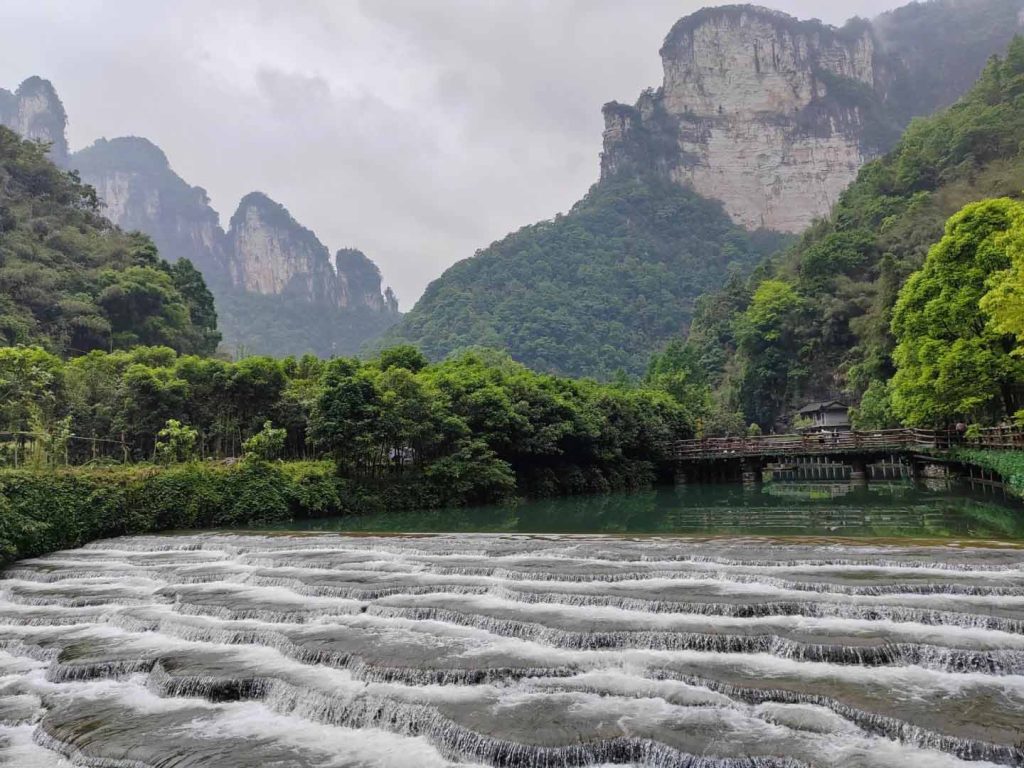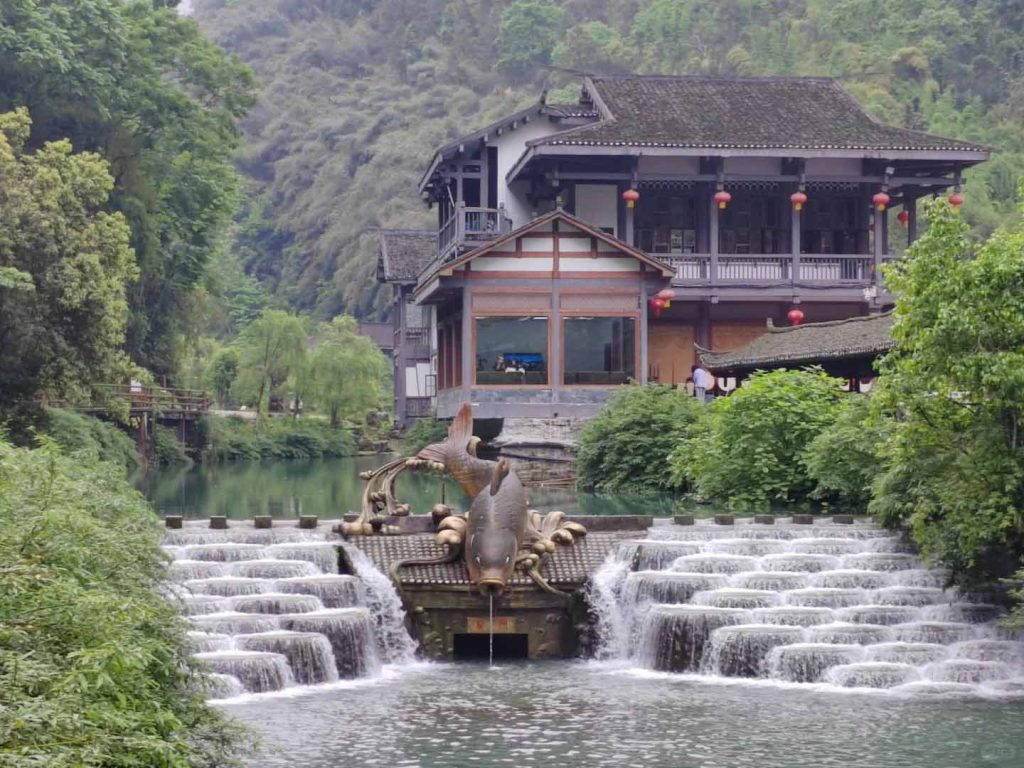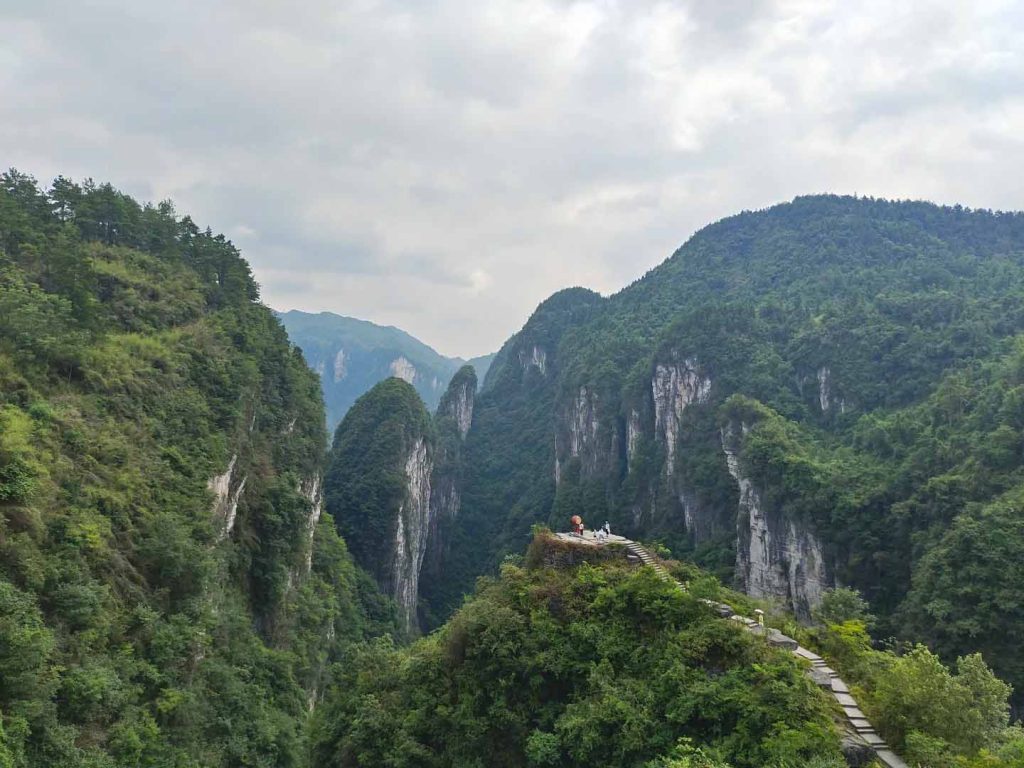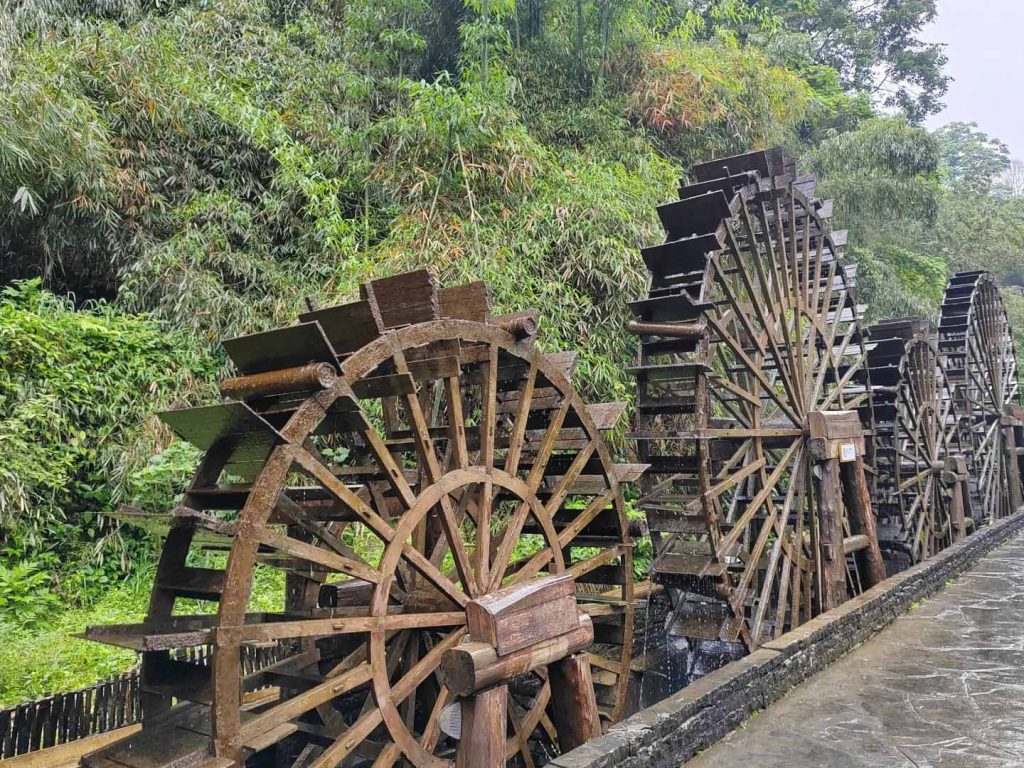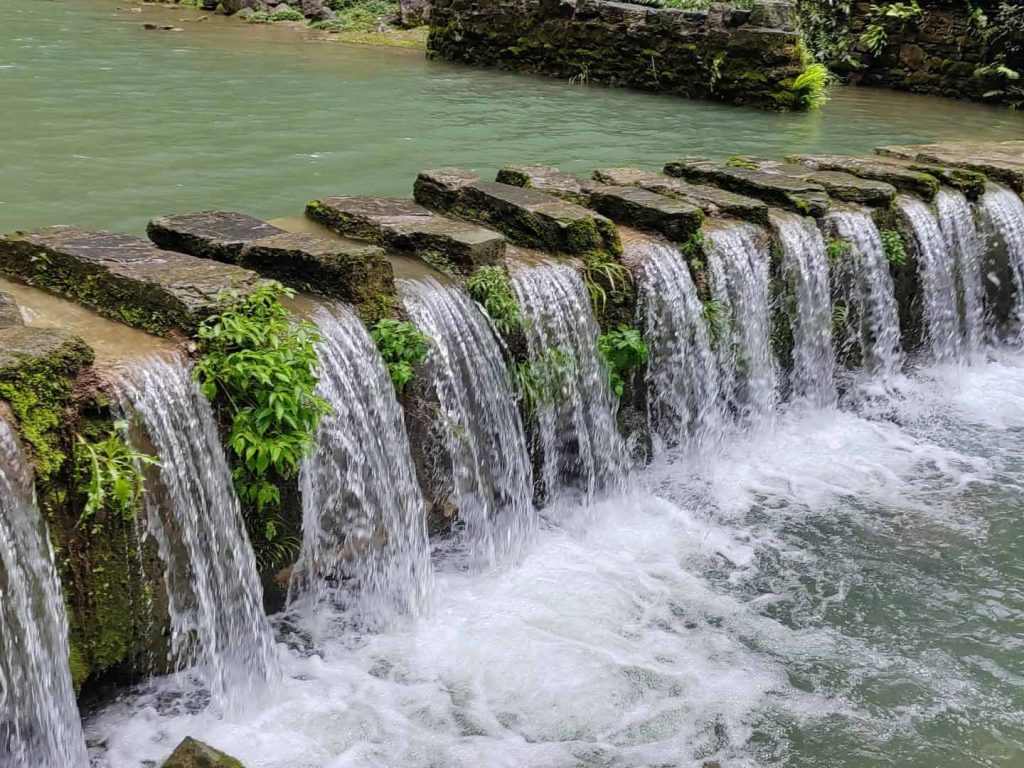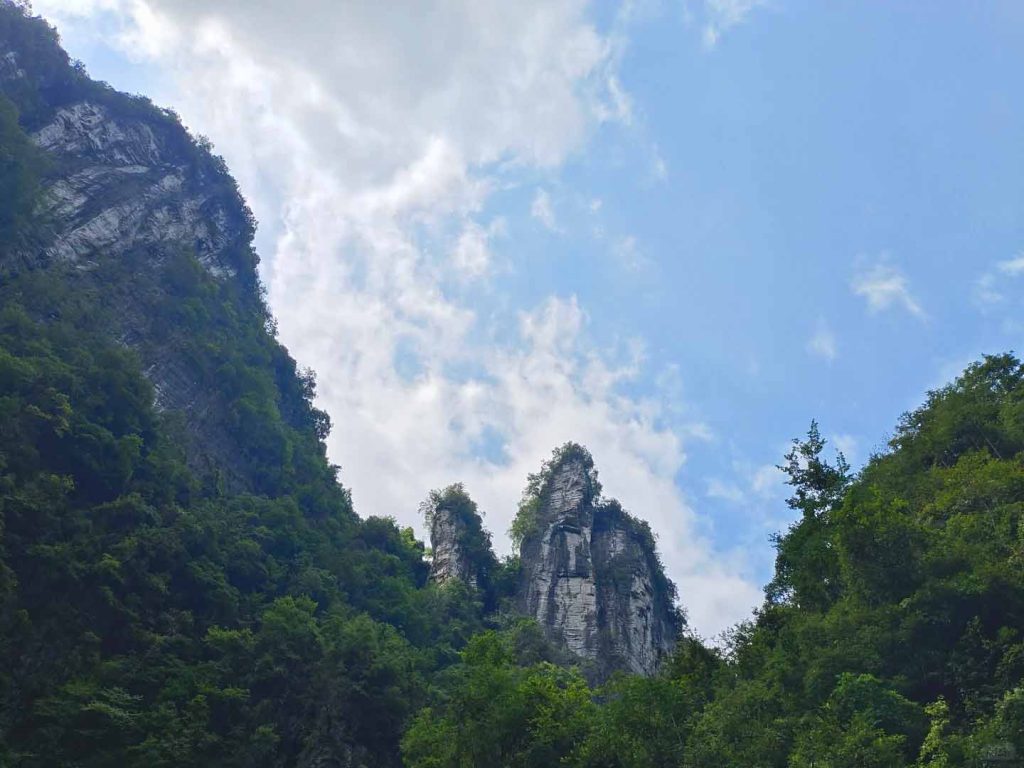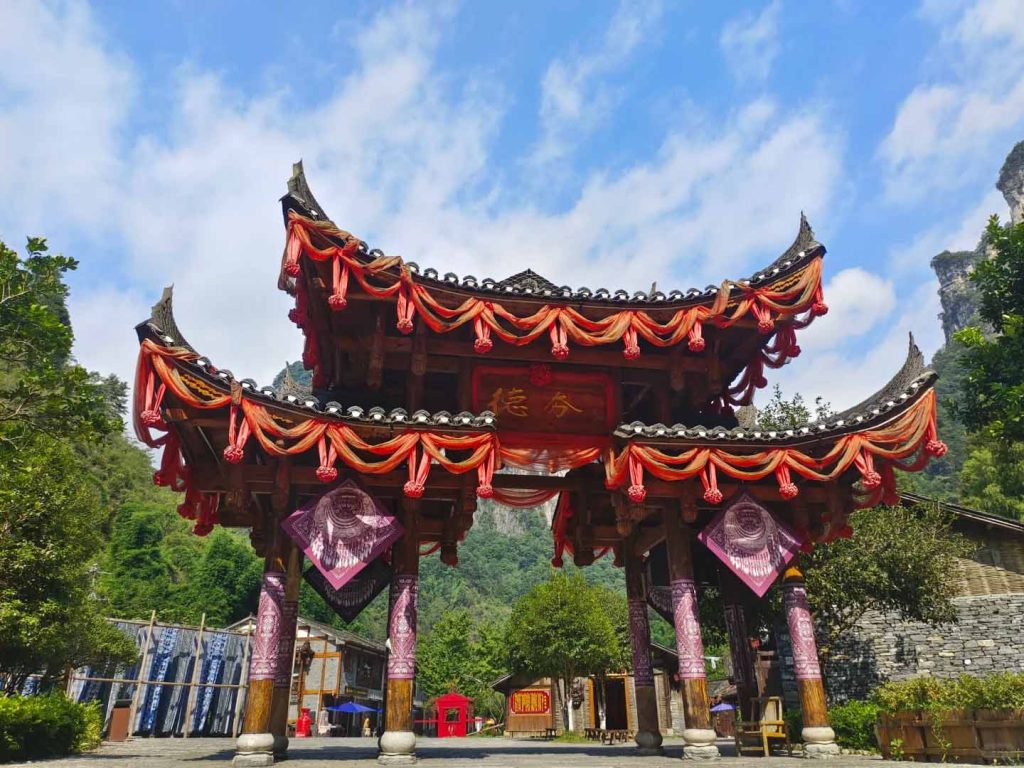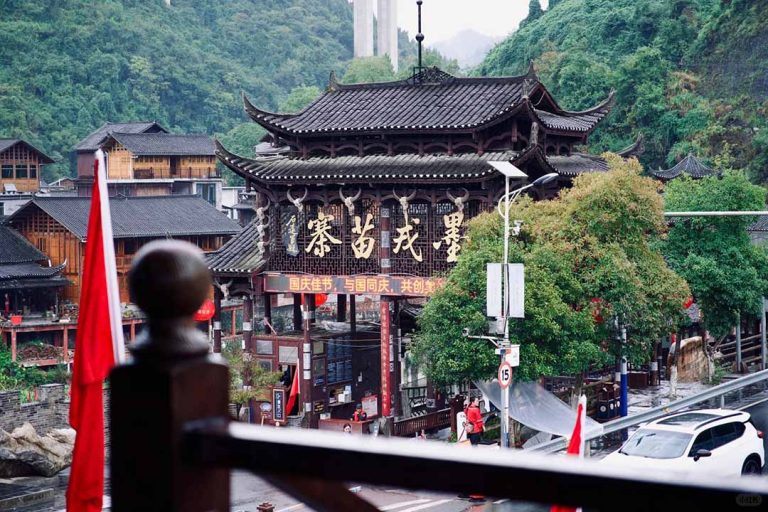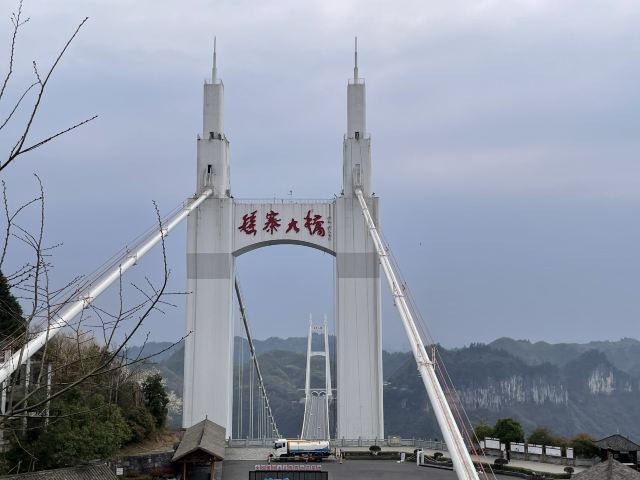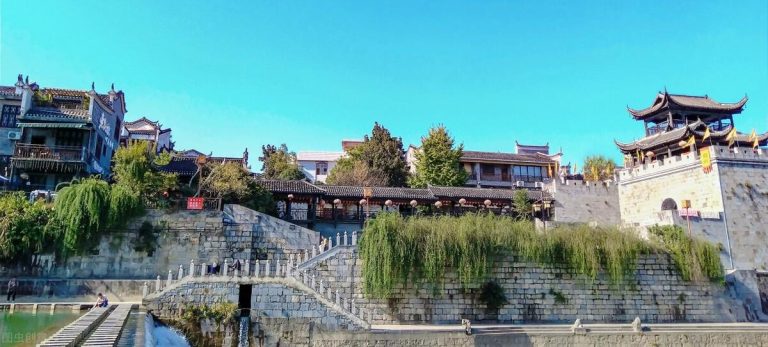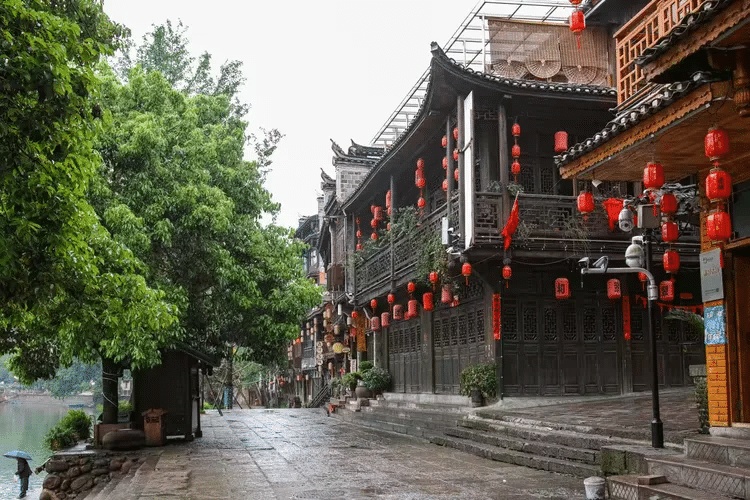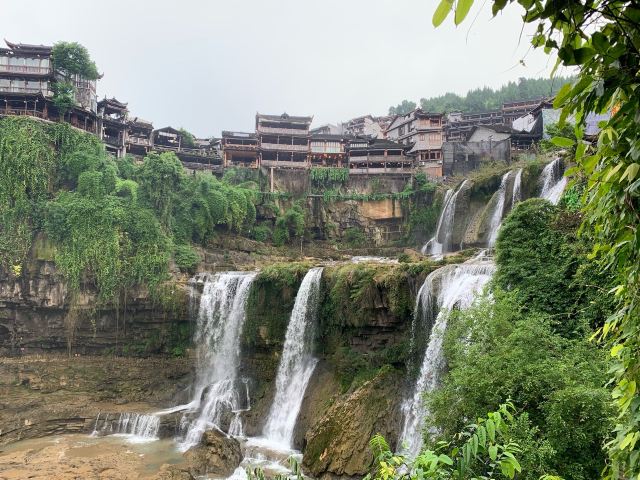address
4 kilometers northwest of Dehang Scenic Area, Jishou City, Xiangxi Tujia and Miao Autonomous Prefecture, Hunan Province
Opening hours
In the open garden; open from 09:00-17:30
Official phone number
Ticketing consultation: 0743-8665350
In the western suburbs of Jishou City, a Tujia and Miao Autonomous Prefecture in Western Hunan, there is a secret realm that combines canyon scenery, Miaozhai customs and geological wonders-the DehangGrand Canyon. ‘Delan’ means “beautiful canyon” in Miao language. It has both the rugged landscape of nature and the rich culture inherited from generations of Miao compatriots. It is an in-depth experience that cannot be missed in tourism in Western Hunan.
1. Basic situation and geographical location
(1) Geographical location
Dehang Grand Canyon is located in Dehang Dehang Village, Xiaozhai Town, Jishou City, Hunan Province, about 24 kilometers away from Jishou City, close to the Qiuzhai Bridge and the Qiuzhai Highway wonders, the three together constitute the “Road and Bridge Canyon” golden tourist belt in western Hunan. The canyon is located in the hinterland of the Wuling Mountain Range, connected to Zhangjiajie in the north and Phoenix Ancient City in the south. It has convenient transportation and can be easily reached by car and tourist buses. It is an important hub for connecting the core attractions of Western Hunan.
(2) Basic overview
Dehang Grand Canyon is a typical karst canyon landscape with a total length of about 15 kilometers, the width of the canyon is about 400 meters, the narrowest is only 50 meters, the valley floor is about 200 meters above sea level, the top of the valley is up to more than 1,000 meters above sea level, and the vertical height difference is more than 800 meters, forming a “cluster of peaks, clouds, and canyons’.A unique landscape of deep, gurgling streams’. The ecological environment in the canyon is primitive, with a forest coverage rate of more than 90%, a high negative oxygen ion content, and an average summer temperature 5-8℃ lower than in urban areas. It is an ideal place for summer vacation and health.
As a settlement of the Miao people, the Grand Canyon of Detan is scattered with traditional villages such as Detan Miaozhai and Jidou Miaozhai. Compatriots of the Miao people have lived here for hundreds of years, and they still retain a complete Miao language, costumes, customs and festival culture, making the canyon not only a natural scenic spot, but also a living environment.Museum of Miao Culture.
2. Core attractions: the blend of natural wonders and humanistic customs
(1) Natural landscape: geological miracles in canyons
- Liuza Waterfall
Liusha Waterfall is an iconic landscape of the Grand Canyon of Tokugawa. It is located in the depths of the canyon. The waterfall is about 216 meters high and about 10 meters wide. It is named after the light gauze fluttering when the water flows down from the top of the cliff due to the influence of the wind. In the rainy season, the waterfall has plenty of water, the mist is filled, and the rainbow often appears under the sunlight; in the dry season, the water turns into filaments and hangs down, like a silver thread hanging on the wall, gentle and smart. There is a natural pool of water under the waterfall. Visitors can feel the coolness of the water vapor up close. They can also follow the trail to the top of the waterfall and overlook the panoramic view of the canyon.
- Tianwentai
Tianwentai is a vantage point for viewing in the canyon. It is named after the legend that Qu Yuan once looked up at the stars and asked the heavens and the earth here. The platform is built on the edge of a cliff, and below is a canyon hundreds of meters deep. Standing here, you can overlook the continuous karst peaks and overlook the winding ramming gorge at the bottom of the valley. When the clouds are misty, it feels like you are in the clouds, and the scenery is extremely magnificent. Tianwentai is also an excellent place to photograph the sunrise and sea of clouds in the canyon. In the early morning, the glow of the sun dyes the red peaks, which can be called a visual feast.
- Ramming Gorge Creek
Rammed Gorge Creek is the core water system that runs through the De Rammed Grand Canyon. The source of the stream comes from the high mountain springs in the upper reaches of the canyon. The water quality is crystal clear and the bottom is clear. There are multiple waterholes, shallows and small waterfalls in series along the way. Visitors can stroll along the stream, tread on the water and play, or take a bamboo raft rafting (open in summer) to admire the strange mountains and rocks and primitive vegetation on both sides of the river, and feel the comfort of “people swimming in the painting”.
(2) Cultural landscape: the living culture of the thousand-year-old Miaozhai
- Dehang Miaozhai
Located at the entrance of the canyon, Delan Miao Village is one of the most preserved ancient Miao villages in western Hunan. The houses in the village are all traditional “hanging foot buildings” of the Miao people, built by the mountains and rivers, with wooden structures with green tiles, scattered in patches. When you walk into the Miao Village, you can visit the Miao cultural Exhibition Hall to learn about the history and folklore of the Miao people; you can also walk into the farmhouse to experience activities such as playing ciba, weaving miao brocade, and learning to sing Miao songs, and feel the fireworks of Miao life.
- Jidou Miaozhai
Jidou Miaozhai is located on the top of the mountain on the west side of the canyon and is famous for its “Miaozhai on the cliff”. There are only dozens of households in the village, retaining a more primitive Miao way of life, stone roads, old mills, and ancient stages can be seen everywhere. Looking down from Miaozhai, you can have a panoramic view of the Grand Canyon of Dehang and the Bridge of Miaozhai. In the evening, the smoke curls, reflecting the twilight of the canyon, like a paradise in the world.
- Miao Festival experience
If you catch up with traditional Miao festivals (such as Miao New Year, Autumn Festival, March 3), visitors can participate in lively folk activities: watch Miao encouragement (such as ‘monkey drum” and ‘reunion drum’”, and experience “blocking the door wine’ (Miao family welcoming etiquette, you need to hold a cup with both hands and drink it out).Only rice wine can enter the village), enjoy the Miao costume exhibition (the sound of silver jewelry collision is crisp and pleasant), and feel the enthusiasm and weight of Miao culture in an immersive manner.
3. Ticket information: Ticket purchase strategies and preferential policies
(1) Ticket price
- Adult ticket: 80 yuan / person (including the core scenic spots of the canyon and the right to visit the Miaozhai of Dehang , excluding secondary consumption items such as bamboo rafting and cableway).
- Bamboo rafting: 60 yuan / person (open in summer, children must be accompanied by an adult).
- Package recommendation: Detan Grand Canyon + Xiaozhai Bridge + Cliff Plank Road joint ticket, adult ticket is about 198 yuan /person, which is more cost-effective and suitable for visiting surrounding attractions in series.
(2) Preferential policies
- Ticket-free people: Children under 1.2 meters, the elderly aged 65 and above (with ID cards), the disabled (with disability certificates), and active-duty soldiers (with officer certificates / soldier certificates) can be exempted from tickets to the scenic area.
- Half-price people: children aged 1.2-1.4 meters, the elderly aged 60-64 (with ID card), and full-time students with bachelor’s degree or below (with student ID card) can enjoy a half-price discount on entrance tickets (40 yuan /person).
- Special benefits: Fresh college entrance examination students in 2025 can get a free ticket to the Grand Canyon Gate (including a tour of Miaozhai) with their entrance examination certificate, and accompanying parents (limited to 2 people) can enjoy a 20% discount on tickets.
(3) Ticket purchase channels
It is recommended to purchase tickets 1 day in advance through regular platforms such as the official account of the scenic area, Ctrip, Meituan, etc. To avoid on-site queuing; tickets can also be purchased at the window of the Scenic area Visitor center (cash and scan code payment are supported). The ticket is valid for 2 days and can be entered twice (identity information needs to be registered at the exit).
4. Precautions for visiting: Safety and experience tips
(1) Safety first, do a good job of protection
- The trails in the canyon are mostly stone steps. Some sections are steep, wet and slippery. It is recommended to wear non-slip sports shoes or hiking shoes and avoid high heels and sandals. Rain gear is required on rainy days. If necessary, you can rent non-slip walking sticks at the visitor center.
- Attractions such as Liusha Waterfall and Tianwentai are close to the cliffs. Do not climb over the guardrail or take pictures near the edge when visiting. Children need to be taken care of by adults throughout the process.
- There are more mosquitoes in the canyon in summer, so it is recommended to bring mosquito repellent; in winter, the temperature is lower (the minimum can be below 0℃), so you need to wear a thick coat, scarf and gloves to avoid frostbite.
(2) Plan the route reasonably and visit the wrong peaks
- The recommended tour time of the scenic area is 3-4 hours. The recommended route is: Visitor Center → Dehang Miaozhai →Zhanxia Creek Trail →Liusha Waterfall →Tianwentai → Jidou Miaozhai (You can return by sightseeing bus, 15 yuan / person).
- There are more tourists on holidays (such as National Day and Spring Festival). It is recommended to enter the park before 8:30 in the morning to avoid the peak flow of people from 10:00-14:00 and enhance the tour experience.
- Self-driving tourists should note: the parking lot of the scenic area is located at the entrance (fee: 10 yuan / car / day). The parking space may be tight during peak season. You can choose to park in the parking lot of the surrounding villages and walk for 5 minutes to the entrance of the scenic area.
(3) Respect folk customs and visit in a civilized manner
- When entering Miao Village, you must respect Miao customs: if you encounter “blocking wine”, you cannot refuse (you can taste it and express courtesy); do not touch Miao silver jewelry, embroidery and other handicrafts at will (if you need to buy, you can consult the price and negotiate the price); do not take pictures of the Miao elderly and children at will (you need to firstWith consent).
- The ecology in the canyon is fragile, and it is forbidden to litter, pick plants, and disturb wild animals. The stream is the source of drinking water in Miaozhai, and swimming and washing items are prohibited.
- If you participate in a Miao catering experience (such as a Miao family banquet), you need to make a reservation in advance (you can use the assistance of the homestay owner or the scenic customer service) to avoid wasting food and abide by the “follow-up action”.
The Grand Canyon of Deram is a geological wonder gifted by nature and a living carrier of Miao culture. Here, you can listen to the roar of waterfalls in the canyons, feel the temperature of folklore in the Miaozhai, and find inner peace in the mountains and rivers. Whether it is a parent-child tour, a couple tour or a cultural exploration tour, you can harvest unique memories of Xiangxi here.

